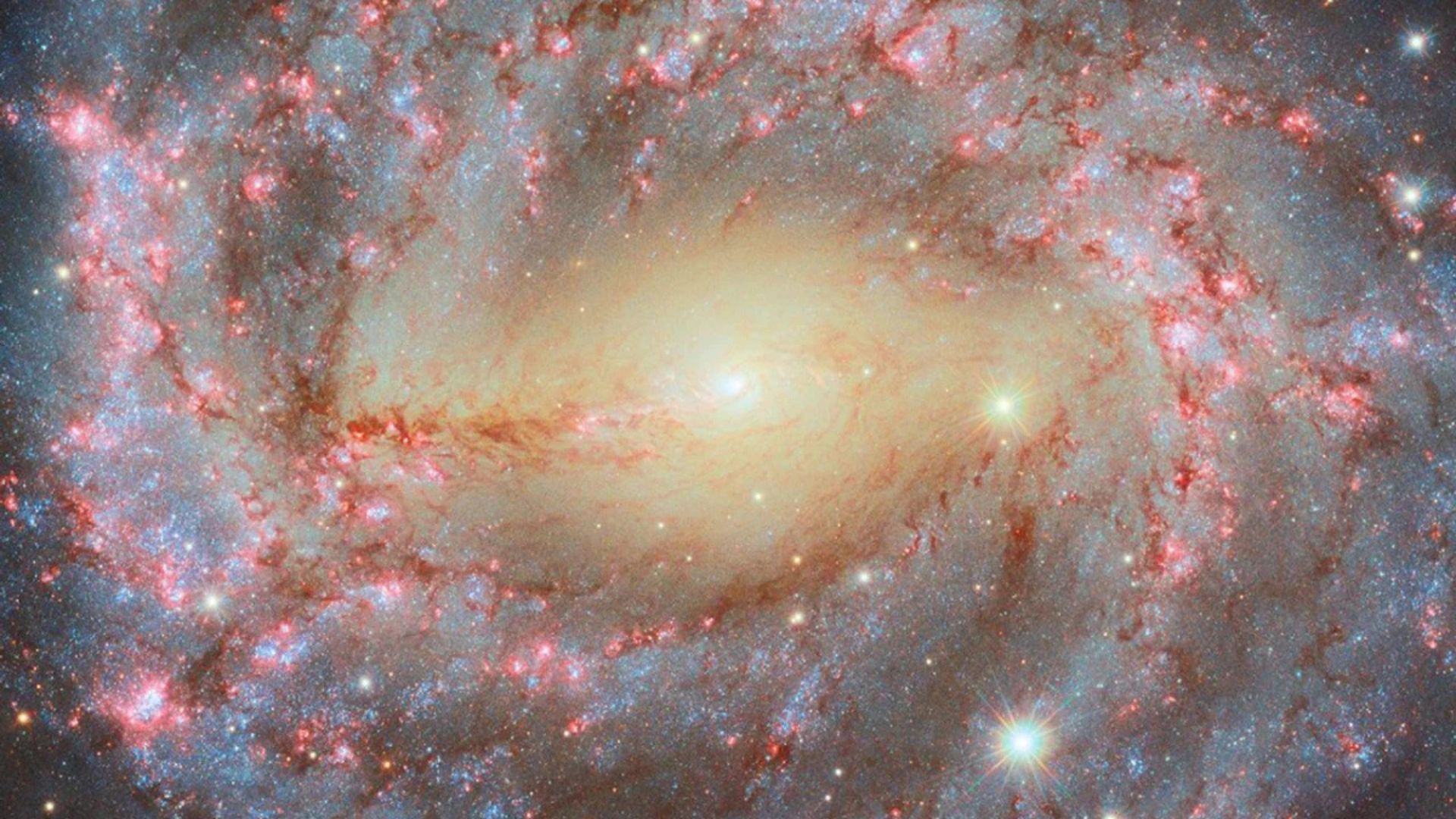The Hubble Space Telescope has captured breathtaking images of the spiral galaxy NGC 5643, located approximately 40 million light-years away in the constellation Lupus. This galaxy, known for its symmetrical “grand design spiral” structure, features prominent spiral arms outlined by bright blue stars and reddish-brown dust clouds. Regions of intense star formation are also visible, marked by striking pink hues within the galactic disc.
Revelations Through Advanced Imaging
According to a recent blog post by NASA, while NGC 5643 is visually stunning at visible wavelengths, its most fascinating characteristics are revealed in ultraviolet and X-ray light. These observations have confirmed the existence of an active galactic nucleus powered by a supermassive black hole. Researchers explain that gas surrounding the black hole becomes extremely hot as it spirals into an accretion disk, emitting radiation across the electromagnetic spectrum, with X-rays being particularly prominent.
A Surprising X-Ray Source
Findings from the European Space Agency’s (ESA) XMM-Newton Observatory indicate that the brightest X-ray emitter in NGC 5643 is not the supermassive black hole itself, but rather an object designated as NGC 5643 X-1. This source is believed to be a smaller black hole, with an estimated mass equivalent to 30 Suns, engaged in a gravitational interaction with a companion star. Gas from the companion star is drawn into the black hole, creating a superheated accretion disk that produces X-ray emissions surpassing those of the galactic core.
The latest Hubble images incorporate expanded wavelength data, enhancing previous observations by highlighting red emissions from gas heated by massive young stars. These findings continue to provide valuable insights into the dynamics of star formation and black hole activity in distant galaxies, offering a clearer understanding of the intricate processes that shape the universe.























